Mirella Sichirollo Patzer's Blog, page 17
February 25, 2015
Camille Claudel - Artist, Sculptor, and Lover of Auguste Rodin
"A revolt against nature: a woman genius"...Octave Mirbeau
Camille Claudel 8 December 1864 – 19 October 1943

Camille Claudel was a French sculptor and artist. Her fascination for clay, stone, and dirt, began when she was a young child, and as she came of age, despite the protestations of her mother, her father supported her to study art. Around 1884, she started working with Auguste Rodin and before long became his lover and confidante. Obviously her family was outraged by the affair.

Camille Cladel sculpting in her workshop
After 1905, she was afflicted by a mental illness. In the throes of her paranoia, she destroyed much of her work. Today, only 90 pieces exist. She disappeared for long periods of time, which alarmed her family. She came to believe that Rodin had stolen her all her ideas and he would soon kill her. As a result, she hid from the world, locking herself in her workshop to work. In 1913, her brother convinced her to voluntarily enter a psychiatric hospital where she had numerous outbursts. Despite her agitation, whenever engrossed in creating art, she was always lucid and calm. On numerous occasions, doctors did their best to convince Camille's family that she could be released back to the world, but her mother refused and kept her locked up with no mail other than her brother. there with no . This outraged the public for they believed the family had committed and locked away a sculptor of genius talent. Her mother forbade her to receive mail from anyone other than her brother. The hospital staff regularly proposed to her family that Claudel be released, but her mother adamantly refused each time.
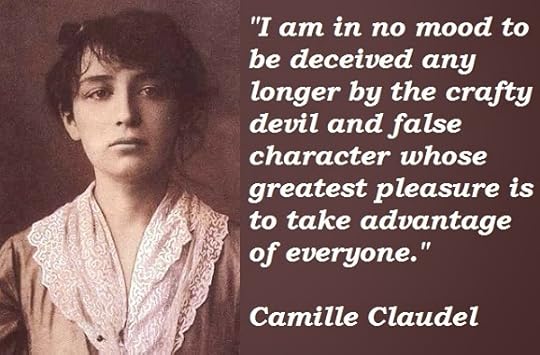
After a long terminal illness Camille Claudel died on 19 October 1943. No one came to her funeral and she was buried in a communal grave in the garden of the asylum where she had been for 30 years.

Bust of Camille Claudel Artist - Rodin
She was a fireball and a prodigy. He was a genius. Their art was revolutionary. Sparks flew between and around them...She burnt out much too soon.
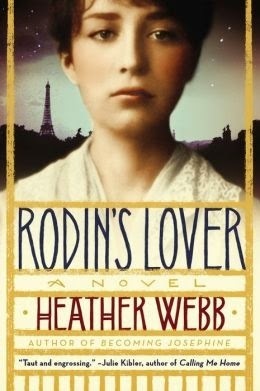 At the turn of the nineteenth century, seventeen year-old Camille Claudel dreams of becoming a famous sculptor, but becoming a female artist means pushing the boundaries of convention a little too far.
At the turn of the nineteenth century, seventeen year-old Camille Claudel dreams of becoming a famous sculptor, but becoming a female artist means pushing the boundaries of convention a little too far.
In Paris Camille will be able to attend art school and possibly have an atelier of her own. Thus, the Claudel family relocates in search of better opportunities for their two most talented offsprings.
Camille soon overshadows her classmates in art school, and her private tutor, a renowned sculptor, sees greatness in her. When he wins a prestigious prize and must leave Paris for Rome, he convinces his friend Auguste Rodin to nurture Camille's talent. But what's with this fiery young beauty who manages to make Rodin feel so uncertain yet capable of tackling anything?!
Rodin's Lover reverberates with intensity. I could picture the unfolding story in my mind as if I were watching a movie.
I have read passages of a book on Mendeleev's quest to organize the chemical elements into a reasonable system. The book is after my own heart, but I have never been able to finish it because I become overwhelmed by emotion to the point that I feel I am on fire, blood pumping in my ears, and bells tolling in my chest. That was the effect Rodin's Lover had on me. I felt uncomfortably aglow, feeling intensely the chemistry between Rodin and Camille--not only the measure of their desire for each other but their intellectual compatibility as well.
Heather Webb has managed quite a feat: to penetrate the mind of a genius, shed light on the chaos that sometimes reigns inside, and expose his creative process. Rodin has come alive in all his glory and complexity: his desires, his dreams, his energy and all-consuming passion...And so has Camille. Webb has zeroed in on how it must have felt as a talented woman to work in a field dominated by men and be overshadowed by them. It is an issue as timely in this day and age as it was at the end of the nineteenth century.
It is said that the line that divides genius and madness is a fine one; Webb has masterfully made it blurry. In Camille there is virtually no difference between a driven individual and an obsessed one.
"Camille dropped to her knees in the mud. Her skirts absorbed last night's rain and the scent of sodden earth. She plunged a trowel, stolen from her neighbor's garden, into the red clay and dug furiously, stopping only to slop hunks of earth into a wooden trough. She needed one more load to mod the portrait of Eugenie. The maid would sit for her again, regardless of her protestations." Opening Sentences.
Rodin's Lover is a biographical novel about the life of French scuptor and artist, Camille Claudel. Despite her mother's interference, Camille's father arranged for her to study art in a time when women were banned from doing so. She came under the guidance of Auguste Rodin, and they soon fell in love and began an affair. After an unwanted abortion, Camille became paranoid and possibly schizophrenic, prone to outbursts. She voluntarily committed herself to a psychiatric hospital, but when doctors tried to release her, her mother intervened and insisted she be kept there.
Set in France during the 1900's, Rodin's Lover is a comprehensive telling of a young woman who defied social norms and became a beloved sculptor. Like many biographical novels, the pace slows sometimes, but the story was compelling enough to keep me reading. The author portrayed Camille in a most sympathetic way, and I found her fascinating for her courage, dedication to her work, and willingness to learn. The author also did a thorough job of describing art techniques and the various historical characters in a very real, believable way. A lovely, but sad story.
Amazon USA Amazon Canada Amazon UK










Camille Claudel 8 December 1864 – 19 October 1943

Camille Claudel was a French sculptor and artist. Her fascination for clay, stone, and dirt, began when she was a young child, and as she came of age, despite the protestations of her mother, her father supported her to study art. Around 1884, she started working with Auguste Rodin and before long became his lover and confidante. Obviously her family was outraged by the affair.

Camille Cladel sculpting in her workshop
After 1905, she was afflicted by a mental illness. In the throes of her paranoia, she destroyed much of her work. Today, only 90 pieces exist. She disappeared for long periods of time, which alarmed her family. She came to believe that Rodin had stolen her all her ideas and he would soon kill her. As a result, she hid from the world, locking herself in her workshop to work. In 1913, her brother convinced her to voluntarily enter a psychiatric hospital where she had numerous outbursts. Despite her agitation, whenever engrossed in creating art, she was always lucid and calm. On numerous occasions, doctors did their best to convince Camille's family that she could be released back to the world, but her mother refused and kept her locked up with no mail other than her brother. there with no . This outraged the public for they believed the family had committed and locked away a sculptor of genius talent. Her mother forbade her to receive mail from anyone other than her brother. The hospital staff regularly proposed to her family that Claudel be released, but her mother adamantly refused each time.

After a long terminal illness Camille Claudel died on 19 October 1943. No one came to her funeral and she was buried in a communal grave in the garden of the asylum where she had been for 30 years.

Bust of Camille Claudel Artist - Rodin
She was a fireball and a prodigy. He was a genius. Their art was revolutionary. Sparks flew between and around them...She burnt out much too soon.
 At the turn of the nineteenth century, seventeen year-old Camille Claudel dreams of becoming a famous sculptor, but becoming a female artist means pushing the boundaries of convention a little too far.
At the turn of the nineteenth century, seventeen year-old Camille Claudel dreams of becoming a famous sculptor, but becoming a female artist means pushing the boundaries of convention a little too far.In Paris Camille will be able to attend art school and possibly have an atelier of her own. Thus, the Claudel family relocates in search of better opportunities for their two most talented offsprings.
Camille soon overshadows her classmates in art school, and her private tutor, a renowned sculptor, sees greatness in her. When he wins a prestigious prize and must leave Paris for Rome, he convinces his friend Auguste Rodin to nurture Camille's talent. But what's with this fiery young beauty who manages to make Rodin feel so uncertain yet capable of tackling anything?!
Rodin's Lover reverberates with intensity. I could picture the unfolding story in my mind as if I were watching a movie.
I have read passages of a book on Mendeleev's quest to organize the chemical elements into a reasonable system. The book is after my own heart, but I have never been able to finish it because I become overwhelmed by emotion to the point that I feel I am on fire, blood pumping in my ears, and bells tolling in my chest. That was the effect Rodin's Lover had on me. I felt uncomfortably aglow, feeling intensely the chemistry between Rodin and Camille--not only the measure of their desire for each other but their intellectual compatibility as well.
Heather Webb has managed quite a feat: to penetrate the mind of a genius, shed light on the chaos that sometimes reigns inside, and expose his creative process. Rodin has come alive in all his glory and complexity: his desires, his dreams, his energy and all-consuming passion...And so has Camille. Webb has zeroed in on how it must have felt as a talented woman to work in a field dominated by men and be overshadowed by them. It is an issue as timely in this day and age as it was at the end of the nineteenth century.
It is said that the line that divides genius and madness is a fine one; Webb has masterfully made it blurry. In Camille there is virtually no difference between a driven individual and an obsessed one.
"Camille dropped to her knees in the mud. Her skirts absorbed last night's rain and the scent of sodden earth. She plunged a trowel, stolen from her neighbor's garden, into the red clay and dug furiously, stopping only to slop hunks of earth into a wooden trough. She needed one more load to mod the portrait of Eugenie. The maid would sit for her again, regardless of her protestations." Opening Sentences.
Rodin's Lover is a biographical novel about the life of French scuptor and artist, Camille Claudel. Despite her mother's interference, Camille's father arranged for her to study art in a time when women were banned from doing so. She came under the guidance of Auguste Rodin, and they soon fell in love and began an affair. After an unwanted abortion, Camille became paranoid and possibly schizophrenic, prone to outbursts. She voluntarily committed herself to a psychiatric hospital, but when doctors tried to release her, her mother intervened and insisted she be kept there.
Set in France during the 1900's, Rodin's Lover is a comprehensive telling of a young woman who defied social norms and became a beloved sculptor. Like many biographical novels, the pace slows sometimes, but the story was compelling enough to keep me reading. The author portrayed Camille in a most sympathetic way, and I found her fascinating for her courage, dedication to her work, and willingness to learn. The author also did a thorough job of describing art techniques and the various historical characters in a very real, believable way. A lovely, but sad story.
Amazon USA Amazon Canada Amazon UK









Published on February 25, 2015 17:52
Eusapia Palladino - Psychic Medium
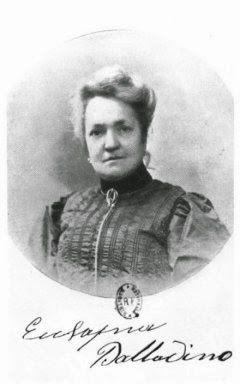 21 January 1854 – 16 May 1918 Eusapia Palladino was a poor woman from Naples. She claimed to be a spiritual medium who could conjer the dead at seances. Seances were all the rage in this era at the end of World War I when many had lost loved ones. So psychic mediums were gaining fame in every corner of Europe and North America. However, many of these mediums were nothing more than tricksters. Of all the mediums who gained fame during this time, Euspasia Palladino was one of the most credible. She claimed to have the powers to levitate tables and communicate with the dead through the aid of her spirit guide, John King. Many were convinced of her powers.
21 January 1854 – 16 May 1918 Eusapia Palladino was a poor woman from Naples. She claimed to be a spiritual medium who could conjer the dead at seances. Seances were all the rage in this era at the end of World War I when many had lost loved ones. So psychic mediums were gaining fame in every corner of Europe and North America. However, many of these mediums were nothing more than tricksters. Of all the mediums who gained fame during this time, Euspasia Palladino was one of the most credible. She claimed to have the powers to levitate tables and communicate with the dead through the aid of her spirit guide, John King. Many were convinced of her powers. 
Eusapia levitating a table in Milan in 1892
She travelled across Europe and submitted willingly to testing. Ultimately however, she was caught in deceptive trickery several times and was finally declared a clever trickster.
A skeptic by the name of Paul Kurtz wrote the following about Palladino:
"[Palladino] was caught red-handed in blatant acts of fraud by members of the Society for Psychical Research in Cambridge and by scientific teams at Columbia and Harvard Universities. She was shown to be substituting her hand or foot and using them in darkened seances to move objects so that they appeared to be levitating. Even her defenders conceded that she cheated, at least some of the time. The problem that puzzles me is this; If one finds sleight-of-hand techniques being used some of the time by such individuals, then why should one accept anything else that is presented by them as genuine?... Skeptics question the first Feilding report because in a subsequent test by Feilding and other tests by scientists, Palladino had been caught cheating."A psychologist by the name of Millais Culpin wrote that Palladino was a conscious cheat but also had symptoms of hysterical dissociation and likely deceived even herself.
I encourage you to read more about this fascinating woman. You can read a book that is based on Eusapia's life - The Witch of Napoli by Michael Schmicker!









Published on February 25, 2015 12:24
FitDesk v2.0 - Yes, you can now work out while working!

I am crazy in love with my FitDesk v2.0. For those of us who make our living sitting at a desk on our laptops or computers for most of the day, like me, work/life balance and squeezing in time for fitness is always a challenge. The moment I saw the FitDesk v2.0 online on Amazon.ca, I purchased it! The product was delivered within 10 days and was easy to put together, even coming with its own tool. We were able to assemble it in less than 45 minutes. For those of you in search of a way to workout without losing valuable writing time, this is the way to go!
The desk tray is sturdy and rubberized, so your laptop will not slip, but just to be sure, the manufacturers have added a strap that wraps around the desktop and your device to keep it securely in place. The entire desktop tray slides back and forth tray so that you can adjust the amount of space you need to comfortably type.

There is a nice large meter that comes with batteries. All you have to do is plug it in and insert it into the slot at the top of the desk. It records time, speed, distance, calories, and there is even an odometer. I have been peddling for over 2 hours today and continue to do so as I write this review. My average speed is 16 mph, which is a good steady pace for endurance bicycling.

Beneath the desk, there is a secret drawer. It's not very big, but enough to store my essentials. Here you will see some retractable earbuds, a USB port to charge my portable devices, and a screen duster for my laptop. There is enough room to store my iphone, etc. too if I wish.

I find the ergonomic arm rests very comfrortable and if you slide your arms back and forth, it gives a bit of a massage for weary wrists and arms when typing for longer periods of time.
The seat is an extra wide gel exercise seat of very high quality. It is very comfortable as is the back rest. However, like all bicycling, if you plan to ride for extended periods of time, your sit bones will become sore and I invested in some bike shorts to alleviate this problem, since I like to ride my FitDesk for 2 hours or more each day.
The FitDesk is fully adjustable - it's back rest, seat height, tray distance, pedals, and tension. I cannot express how pleased I am with this wonderful piece of equipment. I no longer have to leave the house and my work behind to squeeze in a workout. Everything about this desk is put together with careful consideration and with materials of excellent quality. I love my FitDesk! Kudos to the company for coming up with such an excellent product.









Published on February 25, 2015 11:11
February 16, 2015
FitDesk 2.0 - The answer to a writer's dilemma - work vs fitness?
My long awaited FitDesk finally arrived. My first impression is that I love it, absolutely love it. It is the answer to my fitness dilemma where I am always battling against finding time to write versus finding time to work out.

After breakfast I got on the bike and began working on emails and some blogging and before I knew it, 90 minutes had passed. Incredible! I can't believe how time flew so quickly. The surprising part was that I still had the energy to keep peddling and working. My only problem? The universal problem that all endurance bicyclists have and that is that one's derrierre gets sore. So I took a half hour break and then I got back on. This time I managed to do another 50 minutes. And even though I wanted to keep going, to keep peddling and working, I had to stop because it became too uncomfortable for my butt. I peddled with a good tension and at the rate of 16mph which is considered moderate - ideal!
This is good news though, because the FitDesk desk is doing its job. All it will take is continual use and my body will become more accustomed to it. Of that I am certain. Oh and yes, tomorrow I will go and invest in a pair of padded bike shorts. Hopefully in this way I can do up to four or five hours of peddling each day.
So I claim day one as a resounding success and know that the future will be bright with this new fitness gadget.
Stop by every once in a while and I'll keep updating my progress.











After breakfast I got on the bike and began working on emails and some blogging and before I knew it, 90 minutes had passed. Incredible! I can't believe how time flew so quickly. The surprising part was that I still had the energy to keep peddling and working. My only problem? The universal problem that all endurance bicyclists have and that is that one's derrierre gets sore. So I took a half hour break and then I got back on. This time I managed to do another 50 minutes. And even though I wanted to keep going, to keep peddling and working, I had to stop because it became too uncomfortable for my butt. I peddled with a good tension and at the rate of 16mph which is considered moderate - ideal!
This is good news though, because the FitDesk desk is doing its job. All it will take is continual use and my body will become more accustomed to it. Of that I am certain. Oh and yes, tomorrow I will go and invest in a pair of padded bike shorts. Hopefully in this way I can do up to four or five hours of peddling each day.
So I claim day one as a resounding success and know that the future will be bright with this new fitness gadget.
Stop by every once in a while and I'll keep updating my progress.









Published on February 16, 2015 19:37
February 6, 2015
Afghanistan Women before the Taliban and Islamic Extremists
It is painful to the plight of Afghanistan women and how their lives have deteriorated in so brief a time. From one of the most modern minded cultures, Afghanistan has since fallen back into medieval times.
In the future, in my own small way, it is my desire to help bring awareness to the plight of women in countries affected by oppressive Islamic extremist regimes. The Muslim religion is a beautiful and peaceful one. It is the extremists who have turned it into something terrifying, and ugly and oppressive. For the women and children of Afghanistan, I hold you all in my prayers.










In the future, in my own small way, it is my desire to help bring awareness to the plight of women in countries affected by oppressive Islamic extremist regimes. The Muslim religion is a beautiful and peaceful one. It is the extremists who have turned it into something terrifying, and ugly and oppressive. For the women and children of Afghanistan, I hold you all in my prayers.









Published on February 06, 2015 16:36
Afghanistan Women before the Taliban and Islamic extremists.
It is painful to the plight of Afghanistan women and how their lives have deteriorated in so brief a time. From one of the most modern minded cultures, Afghanistan has since fallen back into medieval times.
In thefuture, in my own small way, it is my desire to help bring awareness to the plight of women in countries affected by oppressive Islamic extremist regimes. The Muslim religion is a beautiful and peaceful one. It is the extremists who have turned it into something terrifying, and ugly and oppressive. For the women and children of Afghanistan, I hold you all in my prayers.










In thefuture, in my own small way, it is my desire to help bring awareness to the plight of women in countries affected by oppressive Islamic extremist regimes. The Muslim religion is a beautiful and peaceful one. It is the extremists who have turned it into something terrifying, and ugly and oppressive. For the women and children of Afghanistan, I hold you all in my prayers.









Published on February 06, 2015 16:36
February 4, 2015
The Evening Chorus by Helen Humphreys
 Downed during his first mission, James Hunter is taken captive as a German POW. To bide the time, he studies a nest of redstarts at the edge of camp. Some prisoners plot escape; some are shot. And then, one day, James is called to the Kommandant’s office.
Downed during his first mission, James Hunter is taken captive as a German POW. To bide the time, he studies a nest of redstarts at the edge of camp. Some prisoners plot escape; some are shot. And then, one day, James is called to the Kommandant’s office.Meanwhile, back home, James’s new wife, Rose, is on her own, free in a way she has never known. Then, James’s sister, Enid, loses everything during the Blitz and must seek shelter with Rose. In a cottage near Ashdown forest, the two women jealously guard secrets, but form a surprising friendship. Each of these characters will find unexpected freedom amid war’s privations and discover confinements that come with peace. The Evening Chorus is a beautiful, astonishing examination of love, loss, escape, and the ways in which the intrusions of the natural world can save us.
The Evening Chorus by widely acclaimed author, Helen Humphreys is a poignant drama about the lives of three people during World War II. First, there is James, a pilot captured by the Germans who languishes in a POW camp. His wife of six months, Rose, is left alone in their small country cottage. And James' sister Enid whose affair with a married man ended when her home in London was bombed and he was killed. She fled to Rose's cottage to avoid the scandal.
What makes this novel so poignant, so unique, is the simplicity with which it is written. The prose flows invisibly, making it impossible not to fall completely and utterly into the story. The tale is steeped in symbolism. James becomes fixated on a family of birds across the barbed wire fences, their freedom, and their movements providing a distraction from the horrors of the POW camp and making his life as a prisoner productive. Then there is Rose and he clings to her in his memory, a thread of hope for his survival. But Rose feels the isolation of being alone and she has fallen in love with another army pilot, their affair secret to everyone. Enid too has secrets of her own and the days she spends with Rose are filled with mystery and discord.
Hauntingly beautiful, and highly thought provoking, this book is an excellent choice for book clubs. It is an outstanding piece of women's fiction by a widely praised author. I highly recommend this novel. Beautiful on every page!
Amazon USA Amazon Canada Amazon UK









Published on February 04, 2015 08:47
January 31, 2015
Hoyden of the Week
Published on January 31, 2015 14:07
January 30, 2015
A Roman Bride on her Wedding Day
A Roman bride had to adhere to many strict practices on her wedding day. From hair to gown to jewels, all was an important demonstration of her wealth and rank.



















Published on January 30, 2015 15:58
January 27, 2015
Delia Spencer Caton Fields and her love affair with Marshall Fields in Gilded Age Chicago
In late-nineteenth-century Chicago, visionary retail tycoon Marshall Field made his fortune wooing women customers with his famous motto: “Give the lady what she wants.” His legendary charm also won the heart of socialite Delia Spencer and led to an infamous love affair. (From the back cover of WHAT THE LADY WANTS by Renee Rosen)
For decades, the beautiful. and married society gal, Delia Spencer had been secretly in love with neighbour Marshall Fields, the merchant/founder of the department store that proudly bore his name. Their passionate affair lasted for years and their love for each other endured despite the fact they were both married to others. Sadly, after waiting years to marry, their marriage would be short-lived. Marshall Field died months after their wedding.
Here is Delia Spencer Field's actual obituary from the Chicago Tribune. It gives a lot of detail regarding her life and finances. Her oppulent life and energetic spirit made her one of Chicago's top society dames of the gilded age!

Actual Obituary from the Chicago Tribune, July 24, 1937
Delia C. Field, 84, Merchant's Widow, Dead Beverly, Mass., July 23.
Mrs. Delia Caton Field, widow of the multi-millionaire Chicago merchant, Marshall Field, died tonight at her summer home at Pride's Crossing. Mrs. Field, who formerly was a leader in Washington and Chicago society, was 84 years old. She had been in poor health for several months and recently developed pneumonia. Some years after the death of Mr. Field in 1906, five months after they were married, Mrs. Field moved from Chicago to Washington.
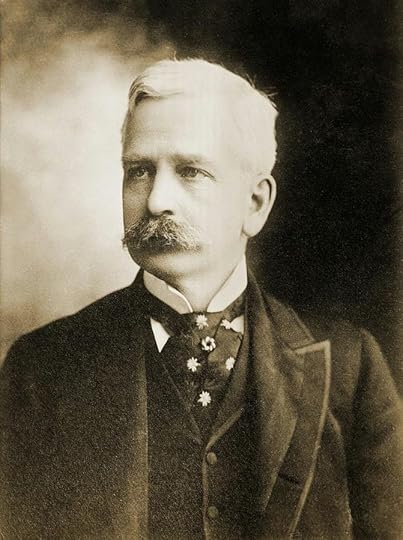
Marshall Field
Before and after the turn of the century Mrs. Marshall Field's talent as a hostess brought her fame from far and wide. The beautiful and dashing matron was long noted for the lavishness and frequency of her entertainments, During the greater part of her life she was prominent in social circles, not only in her home city of Chicago but in the east and abroad as well. Former King Edward VIII, attended her London functions when he was prince of Wales, as did numerous other members of the British royal family.
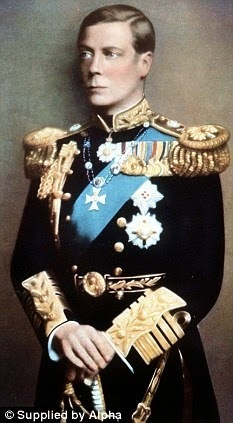
Edward VIII
Many of the best known persons of the day were her guests. Fritz Kreisler and Ignace Paderewski were frequent visitors at her home. There was ever a verve and dash to her parties that seemed to radiate from hei own sparkling appearance, heightened by coal black hair, high color and regal bearing.
During the gay '90s" she was the stately leader of Chicago society.
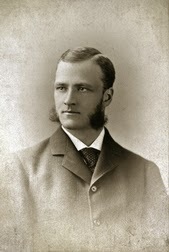
Arthur J Caton
Then the wife of Arthur Caton, to whom she was first married, she was a familiar figure at all society; events, including horse shows where her entries took numerous blue ribbons. Mrs. Field was born at Tonewanda, N.Y., one of three daughters, Her father was Franklin F. Spencer, one of the founders of Hibbard, Spencer, Bartlett & Co. Her mother was Rachel Gifford McCumber of Mass . One of Mrs. Field's sisters, Mary Spencer, died about the time of the Chicago fire. The other, Mrs. Augustus Eddy, died about a quarter of a century ago.
Mrs. Field's first husband, was the son of Judge John D. Caton. Their marriage culminated a romantic affair that began with a meeting on the Caton homestead at Ottawa. For almost two decades, before his death in 1903, Mr. Caton practiced law in Chicago. For many years Mrs. Caton had been a friend and neighbor of Marshall Field, the Caton home on Calumet avenue being almost directly back of the Field home at 1905 Prairie avenue.
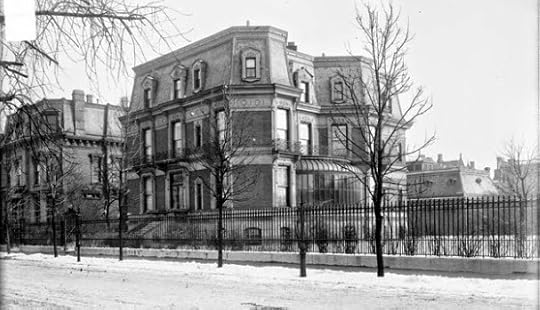
Marshall Field Mansion
 In September, 1905, formal announcement was made in London of the engagement of Mr. Field, then Delia C. Field. The marriage took place a few days later. Mrs. Field continued to live at the Prairie avenue home for many years after Mr. Field's death. Her niece, Mrs. Albert J. Beveridge, spent much time there with her. About 25 years ago, after the death of her sister, Mrs. Field took up her permanent residence in Washington, D. C., where her fame as a hostess acquired ts brightest luster. But for many years she kept the Chicago house staffed with servants and ready for occupancy. She returned annually for a time for briet visits. Several years ago Mrs. Field turned the property over to Marshall Field III to dispose of as he chose. The furniture was given to grandchildren and family servants with the stipulation that none of it ever should be sold.
In September, 1905, formal announcement was made in London of the engagement of Mr. Field, then Delia C. Field. The marriage took place a few days later. Mrs. Field continued to live at the Prairie avenue home for many years after Mr. Field's death. Her niece, Mrs. Albert J. Beveridge, spent much time there with her. About 25 years ago, after the death of her sister, Mrs. Field took up her permanent residence in Washington, D. C., where her fame as a hostess acquired ts brightest luster. But for many years she kept the Chicago house staffed with servants and ready for occupancy. She returned annually for a time for briet visits. Several years ago Mrs. Field turned the property over to Marshall Field III to dispose of as he chose. The furniture was given to grandchildren and family servants with the stipulation that none of it ever should be sold.
In January, 1936, it was announced that the house had been given to the Association of Arts and Industries to be used as an industrial art school. The association plans to start remodeling the 25 room mansion, designed by Richard Morris Hunt of New York, in a week or two and it is expected the school will be opened In the autumn. The only time in many years the house has been ablaze with lights and the scene of a gay party similar to those that formerly were given there was last spring when the association lent the building to a group of young people, including the Shreve Badgers, Alfred Wolfes, Ambrose Cramers, and John R. Winterbothams for a dinner-dance. The guests wore costumes of the '90s.
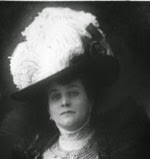
Mrs. Delia Fields
While Mr. Field was called the world's richest man at the time of his marriage, his bride also was comfortably situated in her own right. Mrs. Field's fortune was reputed a few years ago to be about $5,000,000. In addition to a settlement made on her at the time of their marriage, Mr. Field left her $1,000,000 by his will. The balance of his fortune, then estimated at $100,000,000, was divided among his children and other relatives.
See the obituary at: http://archives.chicagotribune.com/1937/07/24/page/1/article/delia-c-field-84-merchants-widow-dead#text
Author Renee Rosen has recently launched a new new novel about the life of Delia Spencer Caton Field, her marriages, and the two men she loved.
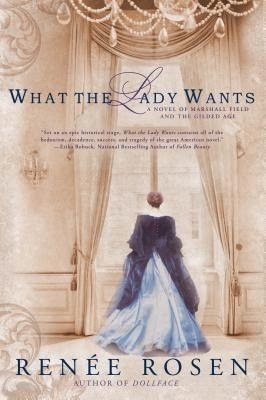 Opening Paragraph: She supposedshe fell in love with him at the same time the rest of Chicago did. The Great Fire had raged on for two days, and the flamesdidn't discriminate: they devoured businesses and residences, mansions and shanties alike. In the end, miles of streets and buildings were ravaged. But from this smoldering ash, a handful of men came forward to rebuild the city. Marshall Field was one of them.
Opening Paragraph: She supposedshe fell in love with him at the same time the rest of Chicago did. The Great Fire had raged on for two days, and the flamesdidn't discriminate: they devoured businesses and residences, mansions and shanties alike. In the end, miles of streets and buildings were ravaged. But from this smoldering ash, a handful of men came forward to rebuild the city. Marshall Field was one of them.
Synopsis: In late-nineteenth-century Chicago, visionary retail tycoon Marshall Field made his fortune wooing women customers with his famous motto: “Give the lady what she wants.” His legendary charm also won the heart of socialite Delia Spencer and led to an infamous love affair.
The night of the Great Fire, as seventeen-year-old Delia watches the flames rise and consume what was the pioneer town of Chicago, she can’t imagine how much her life, her city, and her whole world are about to change. Nor can she guess that the agent of that change will not simply be the fire, but more so the man she meets that night.…
Leading the way in rebuilding after the fire, Marshall Field reopens his well-known dry goods store and transforms it into something the world has never seen before: a glamorous palace of a department store. He and his powerhouse coterie—including Potter Palmer and George Pullman—usher in the age of robber barons, the American royalty of their generation.
But behind the opulence, their private lives are riddled with scandal and heartbreak. Delia and Marshall first turn to each other out of loneliness, but as their love deepens, they will stand together despite disgrace and ostracism, through an age of devastation and opportunity, when an adolescent Chicago is transformed into the gleaming White City of the Chicago’s World’s Fair of 1893.
Review by Mirella Patzer
As Delia hurries home from having witnessed the ravages of the Great Chicago Fire, she has no idea how her life will change. It Chicago in the late 1880's. She marries Arthur Caton, a lawyer, and at first they are happy. But as the wheels of time turn, the marriage begins to reveal its problems and secrets. Despite their troubles, they befriend Marshall Field and his wife who live around the corner. And before long, neither Delia nor Marshall can deny the powerful attraction they feel for each other. Soon, they are embroiled in a passionate affair, even though Delia remains loyal to her husband. Arthur is aware of his wife's affair, and their marriage soon becomes an open one as it frees him to pursue his own unusual interests. Despite all the gossip and scandal, and being ostracized from society, Delia holds her head high and offers no compromise to her life, finally overcoming all to ultimately marry Marshall in widowhood.
It is evident the author has done her research for this story truly came alive. Never boring, the novel tantalized me to keep reading with each turn of the page. I was engrossed in the two marriages, the love that existed between Delia and the two men, and of course, the brilliant mind and honorable intentions of tycoon Marhsall Field. I could not help but be tottally enthralled with the characters. The setting, Chicago during the gilded age added much to enrichen the story line. I love works of fiction that are based on fact, and the novel did not disappoint. This is an exceptional story, which exceeded my expectations. Very highly recommended.
Amazon USA Amazon Canada Amazon UK









For decades, the beautiful. and married society gal, Delia Spencer had been secretly in love with neighbour Marshall Fields, the merchant/founder of the department store that proudly bore his name. Their passionate affair lasted for years and their love for each other endured despite the fact they were both married to others. Sadly, after waiting years to marry, their marriage would be short-lived. Marshall Field died months after their wedding.
Here is Delia Spencer Field's actual obituary from the Chicago Tribune. It gives a lot of detail regarding her life and finances. Her oppulent life and energetic spirit made her one of Chicago's top society dames of the gilded age!

Actual Obituary from the Chicago Tribune, July 24, 1937
Delia C. Field, 84, Merchant's Widow, Dead Beverly, Mass., July 23.
Mrs. Delia Caton Field, widow of the multi-millionaire Chicago merchant, Marshall Field, died tonight at her summer home at Pride's Crossing. Mrs. Field, who formerly was a leader in Washington and Chicago society, was 84 years old. She had been in poor health for several months and recently developed pneumonia. Some years after the death of Mr. Field in 1906, five months after they were married, Mrs. Field moved from Chicago to Washington.

Marshall Field
Before and after the turn of the century Mrs. Marshall Field's talent as a hostess brought her fame from far and wide. The beautiful and dashing matron was long noted for the lavishness and frequency of her entertainments, During the greater part of her life she was prominent in social circles, not only in her home city of Chicago but in the east and abroad as well. Former King Edward VIII, attended her London functions when he was prince of Wales, as did numerous other members of the British royal family.

Edward VIII
Many of the best known persons of the day were her guests. Fritz Kreisler and Ignace Paderewski were frequent visitors at her home. There was ever a verve and dash to her parties that seemed to radiate from hei own sparkling appearance, heightened by coal black hair, high color and regal bearing.
During the gay '90s" she was the stately leader of Chicago society.

Arthur J Caton
Then the wife of Arthur Caton, to whom she was first married, she was a familiar figure at all society; events, including horse shows where her entries took numerous blue ribbons. Mrs. Field was born at Tonewanda, N.Y., one of three daughters, Her father was Franklin F. Spencer, one of the founders of Hibbard, Spencer, Bartlett & Co. Her mother was Rachel Gifford McCumber of Mass . One of Mrs. Field's sisters, Mary Spencer, died about the time of the Chicago fire. The other, Mrs. Augustus Eddy, died about a quarter of a century ago.
Mrs. Field's first husband, was the son of Judge John D. Caton. Their marriage culminated a romantic affair that began with a meeting on the Caton homestead at Ottawa. For almost two decades, before his death in 1903, Mr. Caton practiced law in Chicago. For many years Mrs. Caton had been a friend and neighbor of Marshall Field, the Caton home on Calumet avenue being almost directly back of the Field home at 1905 Prairie avenue.

Marshall Field Mansion
 In September, 1905, formal announcement was made in London of the engagement of Mr. Field, then Delia C. Field. The marriage took place a few days later. Mrs. Field continued to live at the Prairie avenue home for many years after Mr. Field's death. Her niece, Mrs. Albert J. Beveridge, spent much time there with her. About 25 years ago, after the death of her sister, Mrs. Field took up her permanent residence in Washington, D. C., where her fame as a hostess acquired ts brightest luster. But for many years she kept the Chicago house staffed with servants and ready for occupancy. She returned annually for a time for briet visits. Several years ago Mrs. Field turned the property over to Marshall Field III to dispose of as he chose. The furniture was given to grandchildren and family servants with the stipulation that none of it ever should be sold.
In September, 1905, formal announcement was made in London of the engagement of Mr. Field, then Delia C. Field. The marriage took place a few days later. Mrs. Field continued to live at the Prairie avenue home for many years after Mr. Field's death. Her niece, Mrs. Albert J. Beveridge, spent much time there with her. About 25 years ago, after the death of her sister, Mrs. Field took up her permanent residence in Washington, D. C., where her fame as a hostess acquired ts brightest luster. But for many years she kept the Chicago house staffed with servants and ready for occupancy. She returned annually for a time for briet visits. Several years ago Mrs. Field turned the property over to Marshall Field III to dispose of as he chose. The furniture was given to grandchildren and family servants with the stipulation that none of it ever should be sold. In January, 1936, it was announced that the house had been given to the Association of Arts and Industries to be used as an industrial art school. The association plans to start remodeling the 25 room mansion, designed by Richard Morris Hunt of New York, in a week or two and it is expected the school will be opened In the autumn. The only time in many years the house has been ablaze with lights and the scene of a gay party similar to those that formerly were given there was last spring when the association lent the building to a group of young people, including the Shreve Badgers, Alfred Wolfes, Ambrose Cramers, and John R. Winterbothams for a dinner-dance. The guests wore costumes of the '90s.

Mrs. Delia Fields
While Mr. Field was called the world's richest man at the time of his marriage, his bride also was comfortably situated in her own right. Mrs. Field's fortune was reputed a few years ago to be about $5,000,000. In addition to a settlement made on her at the time of their marriage, Mr. Field left her $1,000,000 by his will. The balance of his fortune, then estimated at $100,000,000, was divided among his children and other relatives.
See the obituary at: http://archives.chicagotribune.com/1937/07/24/page/1/article/delia-c-field-84-merchants-widow-dead#text
Author Renee Rosen has recently launched a new new novel about the life of Delia Spencer Caton Field, her marriages, and the two men she loved.
 Opening Paragraph: She supposedshe fell in love with him at the same time the rest of Chicago did. The Great Fire had raged on for two days, and the flamesdidn't discriminate: they devoured businesses and residences, mansions and shanties alike. In the end, miles of streets and buildings were ravaged. But from this smoldering ash, a handful of men came forward to rebuild the city. Marshall Field was one of them.
Opening Paragraph: She supposedshe fell in love with him at the same time the rest of Chicago did. The Great Fire had raged on for two days, and the flamesdidn't discriminate: they devoured businesses and residences, mansions and shanties alike. In the end, miles of streets and buildings were ravaged. But from this smoldering ash, a handful of men came forward to rebuild the city. Marshall Field was one of them. Synopsis: In late-nineteenth-century Chicago, visionary retail tycoon Marshall Field made his fortune wooing women customers with his famous motto: “Give the lady what she wants.” His legendary charm also won the heart of socialite Delia Spencer and led to an infamous love affair.
The night of the Great Fire, as seventeen-year-old Delia watches the flames rise and consume what was the pioneer town of Chicago, she can’t imagine how much her life, her city, and her whole world are about to change. Nor can she guess that the agent of that change will not simply be the fire, but more so the man she meets that night.…
Leading the way in rebuilding after the fire, Marshall Field reopens his well-known dry goods store and transforms it into something the world has never seen before: a glamorous palace of a department store. He and his powerhouse coterie—including Potter Palmer and George Pullman—usher in the age of robber barons, the American royalty of their generation.
But behind the opulence, their private lives are riddled with scandal and heartbreak. Delia and Marshall first turn to each other out of loneliness, but as their love deepens, they will stand together despite disgrace and ostracism, through an age of devastation and opportunity, when an adolescent Chicago is transformed into the gleaming White City of the Chicago’s World’s Fair of 1893.
Review by Mirella Patzer
As Delia hurries home from having witnessed the ravages of the Great Chicago Fire, she has no idea how her life will change. It Chicago in the late 1880's. She marries Arthur Caton, a lawyer, and at first they are happy. But as the wheels of time turn, the marriage begins to reveal its problems and secrets. Despite their troubles, they befriend Marshall Field and his wife who live around the corner. And before long, neither Delia nor Marshall can deny the powerful attraction they feel for each other. Soon, they are embroiled in a passionate affair, even though Delia remains loyal to her husband. Arthur is aware of his wife's affair, and their marriage soon becomes an open one as it frees him to pursue his own unusual interests. Despite all the gossip and scandal, and being ostracized from society, Delia holds her head high and offers no compromise to her life, finally overcoming all to ultimately marry Marshall in widowhood.
It is evident the author has done her research for this story truly came alive. Never boring, the novel tantalized me to keep reading with each turn of the page. I was engrossed in the two marriages, the love that existed between Delia and the two men, and of course, the brilliant mind and honorable intentions of tycoon Marhsall Field. I could not help but be tottally enthralled with the characters. The setting, Chicago during the gilded age added much to enrichen the story line. I love works of fiction that are based on fact, and the novel did not disappoint. This is an exceptional story, which exceeded my expectations. Very highly recommended.
Amazon USA Amazon Canada Amazon UK









Published on January 27, 2015 15:46







